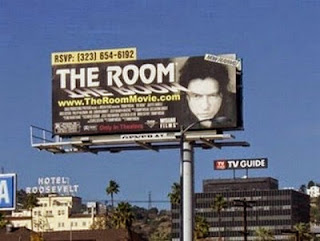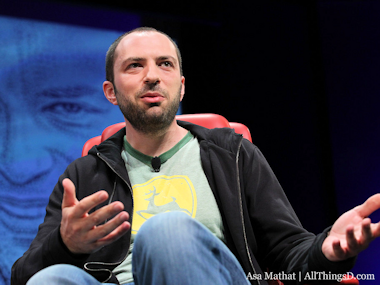Lloyd Alter at Treehugger reports that Broad Group has gotten permission to proceed with the construction of the 220 story Sky City skyscraper starting in June, 2013 in Changsha. Broad Sustainable Construction informs Lloyd Alter and Treehugger that a long and arduous approval process has been completed, and that they are starting excavation and construction on Sky City in June, 2013
.The Sky City concept significantly reduces the per capita use of land, and the CO2 emissions generated getting around
. They call it "a way of development for higher life quality and lower impact on the environment" They see this as the future of Chinese city building: "Urbanization can not be materialized at the cost of land and environmental pollution
."
By going up, hundreds of acres of land are saved from being turned into roads and parking lots
. By using elevators instead of cars to get to schools, businesses and recreational facilities, thousands of cars are taken off the roads and thousands of hours of commuting time are saved
. It makes sense; vertical distances between people are a whole lot shorter than the horizontal, and elevators are about the most energy efficient moving devices made
. A resident of Sky City is using 1/100th the average land per person
.The modular factory mass produced skyscrapers are five times more energy efficient than conventional ones, using 8 inch thick insulated walls and triple glazing
. There is exterior shading on the windows that cuts cooling requirements by 30% and what cooling or heating is needed comes from a co-generation plant using waste heat from power generation
. In one building, there will be accommodation for 4450 families in apartments ranging from 645 SF to 5,000 SF, 250 hotel rooms, 100,000 SF of school, hospital and office space, totaling over eleven million square feet
. The building footprint is only 10% of the site; the rest is open parkland
.If you would rather walk rather than wait for one of the 92 elevators, there is six mile long ramp running from the first to the 170th floor
. Beside the ramp are 56 different 30 foot high courtyards used for basketball, tennis, swimming, theatres, and 930,000 square feet of interior vertical organic farms.
The building is designed to be earthquake resistant to Magnitude 9, and to a 3 hour fire resistance rating, provided by ceramics installed around the structure
. 16,000 part time and 3,000 full time workers will prefabricate the building for four months and assemble on site in three months
. The Broad system is based on prefabricated floor panels that ship with everything need to go 3D packed along with it, so they are not shipping a lot of air
. It all just bolts together
. BSC claims that by building this way, they eliminate construction waste, lost time managing trades, keep tight cost control and can build at a cost 50% to 60% less than conventional construction
. The building is to cost $628 million and have 11 million square feet of space inside, which is about $60 per square foot. A 1000 square foot apartment would cost the developer about $60,000 and might sell for about $100,000
. This would lower the cost of living in megacities like Shanghai, Changsha or New York
. The lower cost versus
$300 to 1000 per square foot for buildings like the Trump Tower Chicago or Freedom tower means that skyscrapers could hold not just expensive offices but also regular apartments, grocery stores, hospitals, schools and other regular applications
. The low cost enables a city inside a skyscraper and not just high end offices, luxury apartments and high end restaurants
. They plan to build one hundred and fifty 30-story apartment building, hotel, office plans using the new system
. They have started building a 1
.33-million-square meter "NO.1 Sustainable Building Factory" and it will be able to produce 10 million square meters of mass produced skyscrapers (about 100 million square feet) each year
. The 30 story building is 183000 square feet so the factory can produce about 500 of the 30 story building each year and many more factories will be built
. The Changsha Broad Air Conditioning Company has unveiled designs for the 200-storey Sky City tower, a sustainable mixed use project
. At 666 meters tall, the building will house 1.2 million square meters (12 million square feet) of space for residential apartments, retail, offices, restaurants, schools and a myriad of other facilities
. The building will be manufactured in a factory and assembled on the construction site
. Additionally, the tower will have the capacity for 70,000 to 110,000 residents
. It will use 400 kilograms (1000 pounds of material) per square meter)
. 480,000 tons of building
. Even with reducing the occupancy by half so that units are 1320 square feet instead of 660 square feet the amount of material is 12 tons per person for 40,000 people
. The Broad Group building also includes offices and retail shopping
. Instead of being 6 times more efficient with material it is more like 8-10 times, since it is replacing 72 tons of house and the extra buildings for offices and shops
. It is 20 times more efficient if the higher occupancy levels are used
. Other Broad Group TechnologyNon-electric air conditioning withstood the world's toughest stress test serving over 250 pavilions in the largest, crowdest, hottest, and most dynamic architectural site
. Achieving "zero fault" operation for 6 months, contributing to a successful Expo
. Also saved 73,000 tons of CO2 emissions, and realized "Low Carbon Expo"
.Successfully developed super-size " Heat Recovery Fresh Air Unit", realizing 99
.9% air purification efficiency, ensuring abundant fresh air supply and high efficiency heat recovery
.Earlier Plans for a 666 meter tall skyscraper but now modified for 828 meter skyscraper
A Chinese company developed new factory prebuilt construction that can make a 15 story building in 6 days plans to build the second tallest building in the world over 6 months. 93% of the construction work is done in the factory vs at most 40% in western countries
.The Changsha Broad Air Conditioning Company has unveiled designs for the 200-storey Sky City tower, a sustainable mixed use project. At 666 meters tall, the building will house 1
.2 million square meters of space for residential apartments, retail, offices, restaurants, schools and a myriad of other facilities
. The building will be manufactured in a factory and assembled on the construction site
. Additionally, the tower will have the capacity for 70,000 to 110,000 residents
.They are trimming their costs to 7,000 yuan to 8,000 yuan per square meter
. The company then adds its profit margin and sells its properties for around 10,000 yuan per sq m - or about half the price of properties in Shanghai outside the city center
. This would convert to a 660 square foot unit costing about US$100,000
. The whole building is 1
.2 million square meters so this project will cost about US$1
.25 to 1
.46 billion and will sell for $1.83 billion.
Numbeo has Shanghai cost of living and Shanghai apartment prices are currently three to six times as high to buy as these apartments would be
Comfort of Skycity • 100% fresh air, no mixed with return air, eliminate infection
. 3-stage filtered fresh air , 99% nano-particulates be filtered
. Indoor air is 20-100 times cleaner than outdoor air
. Central vacuuming system keeps indoor air quality.
• Space blocks and all rooms remain at 20~27 ℃ all year round, glass wall enable
sunshine lighting up the streets
. • The clear height of residences and office is 2
.8m, the clear height of space blocks are 5.6m, 9m, 12m respectively
. • Four 4meter wide streets start from the ground to the floor 121 at 400m, the total length of street is 12km, shops, agriculture markets, handcraft shops, restaurants, amusement parks, sports centers, natatorium, cinemas, opera houses, museums, libraries, training centers, schools, kindergartens, clinics, banks, police stations, etc
. on both sides of street, same as city downtown
. Botanical garden, natural parks, fishponds, waterfalls, sand beach can be found in some floors, same as the suburban
. • 16 large observation elevators and 31 high-speed elevators can serve 30,000 people every hour
.Safety • Level 9 earthquake resistance, scale model will be tested by national authorized institution
. • BROAD unique technologies "diagonal bracing, light weight, factory-made" ensure the
highest earthquake resistance level with minimum materials
. • Trapezoidal construction structure corresponds the law of mechanics, which can withstand earthquake and storm
. • Sky gardens locate on floor 71, 121, 156, 176 and 191(12,000m2 in total), also function as the helipads, which are able to evacuate tens of thousand people during fire emergency, provide extra fire protection than conventional skyscrapers
.Energy Conservation • 150mm exterior insulated walls, triple-paned windows, exterior solar shading, interior window insulation and heat recovery fresh air, 80% more energy efficient than conventional buildings
. • Adopting "distributed energy system", turbines provide power independently, exhaust from turbines is the source for cooling, heating and sanitary hot water
. 50% more energy efficient than the power grid.
• Indoor HVAC is controlled by occupancy sensor, fan speed will be automatically adjusted to the lowest load when people left
. • Elevator generates electricity when ascending unload and descending full load, also choose the floor outside the elevator, and other electricity saving methods can save 75% more electricity than conventional elevator
. • LED lamp, 90% more energy efficient than incandescent lamp and 50% more energy efficient than fluorescent lamp
. • Separated drainage system, rain water is used for plant irrigation, bathing water will be directly drained after settled, bathroom sewage and kitchen waste go to biogas tank, biogas is used as fuel for air conditioning, and solid wastes become organic fertilizers
.Sustainability • Annual energy conservation 60,000 ton oil equivalent
• Saving 600,000 ton construction materials
• Saving 1
.4 sq. kilometers land (volume ratio 50)
• On-site construction waste is less than 1% of the total weight
• Zero raise dust on-site
• Zero water consumption on-site
• Recycle processes of living garbage from the building
• All steel structure, reuse after abandoned
The company's presentation of Sky City, incl. specs and drawings.
If you liked this article, please give it a quick review on ycombinator or StumbleUpon . Thanks














































 It’s safe to say that WhatsApp CEO Jan Koum does not crave the spotlight. But he does have a lot to say.
It’s safe to say that WhatsApp CEO Jan Koum does not crave the spotlight. But he does have a lot to say.


